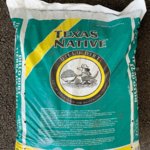Cadmium Soil Contamination Risks and Remedies
Smelters are the leading source of cadmium (a heavy metal) contamination of the air. Burning of fossil fuels (coal, oil) also contributes to the air contamination with cadmium. This is commonly accumulated in soils, and shows up in minute quantities in the food we eat. And with increasing use of recycled waste as soil fertilizer, the accumulation of cadmium increases. Excess cadmium in soil can signficantly reduce tobacco root and leaf growth.

 phys.org
phys.org
Bob
Smelters are the leading source of cadmium (a heavy metal) contamination of the air. Burning of fossil fuels (coal, oil) also contributes to the air contamination with cadmium. This is commonly accumulated in soils, and shows up in minute quantities in the food we eat. And with increasing use of recycled waste as soil fertilizer, the accumulation of cadmium increases. Excess cadmium in soil can signficantly reduce tobacco root and leaf growth.
A new study demonstrates how foliar application of nanoparticles of other metals (iron and zinc) can remediate the effects of Cd contamination on tobacco.Soil contamination with cadmium, consequences and remediation using organic amendments
https://doi.org/10.1016/j.scitotenv.2017.06.030
Abstract
- Industrialization and urbanization have caused Cd contamination of soil/vegetable.
- Cd poses high threats to soil quality, food safety, and even human health.
- Organic amendments are an environmentally friendly and cost effective technique.
- Organic amendments improve soil quality and reduce Cd availability in soil solution.
- Organic matter makes complexes with Cd and minimizes its subsequent bioaccumulation.
Cadmium (Cd) contamination of soil and food crops is a ubiquitous environmental problem that has resulted from uncontrolled industrialization, unsustainable urbanization and intensive agricultural practices. Being a toxic element, Cd poses high threats to soil quality, food safety, and human health. Land is the ultimate source of waste disposal and utilization therefore, Cd released from different sources (natural and anthropogenic), eventually reaches soil, and then subsequently bio-accumulates in food crops. The stabilization of Cd in contaminated soil using organic amendments is an environmentally friendly and cost effective technique used for remediation of moderate to high contaminated soil. Globally, substantial amounts of organic waste are generated every day that can be used as a source of nutrients, and also as conditioners to improve soil quality. This review paper focuses on the sources, generation, and use of different organic amendments to remediate Cd contaminated soil, discusses their effects on soil physical and chemical properties, Cd bioavailability, plant uptake, and human health risk. Moreover, it also provides an update of the most relevant findings about the application of organic amendments to remediate Cd contaminated soil and associated mechanisms. Finally, future research needs and directions for the remediation of Cd contaminated soil using organic amendments are discussed.

Metal nanoparticles serves as plant growth regulators
Engineered nanomaterials (EMs) negatively or positively affect plant growth and development attributed to their physiochemical properties, application, and concentrations. Previous studies have shown that ferroferric oxide (Fe3O4) nanoparticles affect tobacco (Nicotiana tabacum) seed germination...
Bob


